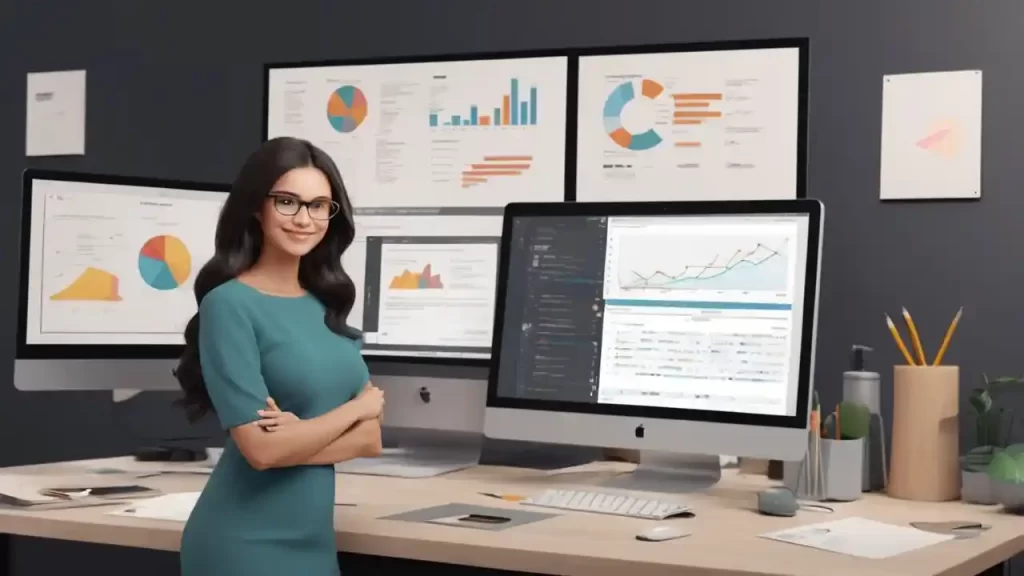Today, with the digital landscape in place, educators can uniquely use webinars for outreach to prospective students and to engage current ones, thereby enriching the learning experience. Webinars are a powerful tool for lead generation through which an educational institution can get in direct contact with its target audience while showcasing its service or product. In this article, we will take a look at how to leverage webinars effectively for lead generation by sharing.
Importance of webinars for lead generation in education
- Real-time engagement: Webinars create an interactive platform for educators to engage with potential students directly. This real-time connection allows educators to address queries, alleviate concerns, and establish a personal rapport, fostering trust and credibility.
- Global reach: Unlike traditional in-person events, webinars can accommodate a vast audience from different geographical locations. This scalability ensures that educational institutions can maximize their outreach efforts, connecting with hundreds or thousands of potential students at once.
- Content control: Webinars provide educators with the opportunity to craft and control the narrative around their institution’s offerings. They can effectively showcase unique programs, achievements, and institutional strengths, allowing for a tailored presentation of their brand.
- Cost-effectiveness: Hosting webinars is generally more economical compared to traditional marketing methods. With reduced overhead costs related to venues and logistics, institutions can allocate resources more efficiently, allowing for broader promotion and higher engagement.
Why webinars are effective for lead generation in education
Webinars represent a special, interactive medium for educators to get across to the students directly in real-time. Here is why they are ideal for education lead generation:

- Personalized engagement: Webinars offer educators an opportunity to be in one-on-one interaction with potential students by addressing their queries and responding to their apprehensions in real-time.
- Scalability: Educators can effectively reach hundreds or even thousands of students all over the world, all from a single event.
- Content control: Webinars can help educators control the narrative and show their institutional strengths and unique offerings.
- Cost efficiency: Webinars are cost-effective and have greater reach compared to traditional methods of marketing.
Crafting a compelling webinar topic for maximum engagement
The starting point in having a successful webinar is to choose the right topic that participants would find useful and interesting. This means that when trying to capture student’s attention, educators should consider the topics that may be interesting to the reader and if they coincide with the educational objectives of the students.
Tips for selecting topics:
- Address common student pain points: Concentration on problems or objectives prevalent among students. For instance, an audience of students who need help in online education might find the headline “How to Succeed in Remote Learning.”
- Highlight unique programs or offerings: If your institution provides services, that are not common or typical, for instance, virtual internships, or other types of certification, create a webinar about these topics.
- Focus on future career paths: Lots of students want to know how certain types of education can lead them to a particular profession. Some of the webinars include ‘Preparing for a Career in Digital Marketing’ which has students who are within the specific career niche.
Using webinar marketing strategies to attract students
When you have selected an engaging topic, you need to share it with others. Through all the various online points of presence, make your audience aware of the webinar that you will be hosting.
Effective promotion channels:
- Email marketing: Invite all contacts from your institution’s mailing list. Some of the following techniques that can be used to functionalize the emails are as follows; Personalise the emails.
- Social media: Other social media platforms that can be used include, LinkedIn, Twitter, and Facebook and ensure you set up an event on Instagram. Tease content in the form of an infographic, some video clips, or an introduction to the speakers.
- Educational forums and communities: People who study education will be likely to attend the webinar if they come across the post in education forums or groups.
- Partner with influencers: Industry opinion leaders may also assist you in reaching a broader audience if they provide your webinar information to their audience.
Creating interactive and engaging webinars
Webinars’ strongest selling point is the capability to engage the audience. In the case of the educational webinars the more engaging they are the more vivid and therefore information effective they get.
Tips for interaction:
- Live Q&A sessions: Set a portion of the time for an open forum where students can ask questions, and the facilitator responds immediately.
- Polls and surveys: Employ polls to measure the degree of understanding of its audience and its interests. Such feedback received during the surveys later can be useful for the further organization of webinars.
- Breakout sessions: For complex areas, it is quickly split students into small group sessions to ensure they discuss their ideas with peers and faculty.
- Use of visual aids: Include slides, videos, and animations to make your content more engaging and improve the user’s understanding of the content.
Lead nurturing strategies post-webinar
Webinars as a way of generating leads is not as simple as having people sign up and provide you with information as you have come to realize. The next and most important step is to cultivate these leads and assist them through the process of enrollment or increased participation in your institution.
Effective lead nurturing tactics:
- Follow-up Emails: Follow up an email after the event with a thank you note to the attendees with links to further information or the next programs being set to be launched.
- Exclusive content: Provide links to PDFs, guides, or b doctors, recorded webinars, and any materials that you would have presented in your session. That in turn strengthens their interest and urge to engage in similar behaviors.
- Automated drip campaigns: A series of follow-up emails should be sent, using an autoresponder tool, specific to the attendees of your webinar but about different aspects of your institution.
- Personalized outreach: Follow up with attendees with a call or mail for a higher intent lead and make a connection with the admission counselor.
Maximizing conversion rates: from attendees to enrolled students
As for teachers, the goal of webinars is to transform those who showed interest into the attendees into the students. Here are some tactics to optimize the conversion process:
Conversion tactics:
- Clear call to action (CTA): There must be a strong closing to the webinar to encourage the audience to take the necessary action to set up a campus tour, sign up for a free consultation, or for course application.
- Limited-time offers: Make the prospects feel that the maximum benefits are to be gained urgently thus should apply for limited constant fees or enroll early on.
- Share success stories: Include and elaborate on the stories of former students who benefited from the program and keep adding encouragement at the end.
- Easy enrollment process: Make sure the enrollment process is obvious and can be followed, with a link plus a short instruction given at the end of the webinar.
Measuring success: Key metrics for webinar performance
In order for you to enhance your webinar planning, it will be beneficial to analyze specific measures. These values can assist you to learn what goes well or poorly and as a result, develop a strategy on what to include or exclude.
![Webinar] Metrics & KPIs Every Marketer Should Track | Statusbrew](https://i.ytimg.com/vi/ylHKZijYVxE/mqdefault.jpg)
Essential metrics to track:
- Attendance rate: The registered entity to total a number of participants ratio. This metric demonstrates how good your reminder and marketing emails are since they inform the number of people interested in your products or services.
- Engagement rate: See how participation was in terms of polls, Questions, and answers as well as Chat engagement mozzarella.
- Conversion rate: This metric measures the exact amount of attendees who engaged in a specific action, including providing their contact information for further information, or applying for a course.
- Post-webinar feedback: Below are the surveys that were taken to get feedback from the attendees and to grasp what worked best with the audience.
Best practices for successful educational webinars
To ensure every webinar maximizes its lead generation potential, follow these best practices:
- Plan ahead: Ideally for an effective promotion and with the right content drafted in advance, you should consider beginning the planning process a month prior to the date of the webinar.
- Rehearse and Test: Make sure you have a tech check of the audio, video, and Presentation software that will be used at the next event.
- Engage before and after: Pre-webinar emails help to create demand while post-webinar emails help to sustain the relevant demand.
- Make it accessible: It will also be useful for you to suggest that students who were not able to attend the live webinar session should watch it on the replay. Availability thus offers coverage and density of engagement in the targeted audience.
Conclusion
Webinars are also very effective ways by which educators can influence a target audience with a view to converting them into customers. By choosing the right topics, applying proper marketing techniques, and managing the webinar process, higher education institutions can help nurture leads and promote enrolments. Prominent in the evolution of digital marketing education, webinars are also interesting, easily scalable, and relatively cost-efficient to enhance educators’ efforts to raise the roof in lead generation and student recruitment.




